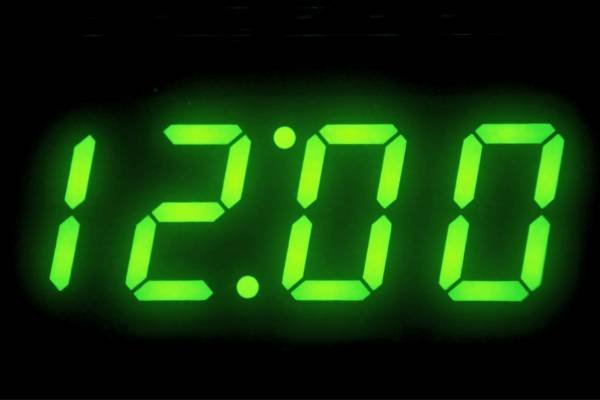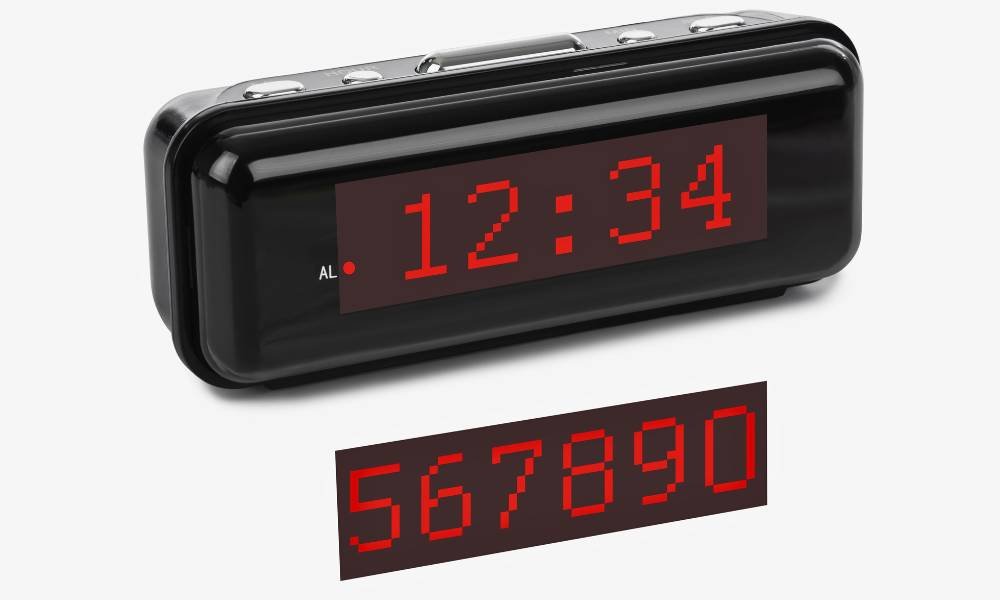Ever wondered, “How do digital clocks keep time?” Digital clocks, found in homes, offices, and even on our wrists, rely on precise technology to measure time accurately. Unlike traditional clocks with gears and hands, digital clocks use electronic components to maintain accuracy. In this article, we’ll explore the science behind how digital clocks keep time, including the role of quartz crystals and electronic pulses. Understanding this process will not only satisfy your curiosity but also enhance your appreciation for the technology we often take for granted.
How Do Digital Clocks Keep Time? A Step-by-Step Process
- Quartz Activation: Power activates a quartz crystal, causing it to vibrate.
- Oscillation: Vibrations create a consistent oscillation frequency.
- Frequency Division: Oscillation is divided to generate 1 pulse per second.
- Pulse Counting: The clock counts pulses to track time.
- Time Display: Pulses are converted to seconds, minutes, and hours on the display.
- Time Adjustment: Buttons allow manual time setting.
- Continuous Process: The cycle repeats to keep time accurate.
The Quartz Crystal Oscillator
The key to how digital clocks keep time lies in the quartz crystal oscillator. Quartz, a naturally occurring mineral, vibrates at a precise frequency when exposed to an electrical charge. These vibrations are incredibly consistent, making quartz ideal for accurate timekeeping. In digital clocks, the quartz crystal oscillates at a fixed rate, typically 32,768 times per second. This consistent oscillation is used to generate electronic pulses, which are then counted by the clock’s circuitry. The number of pulses determines the passage of time, allowing the digital clock to display seconds, minutes, and hours with remarkable accuracy.
The Oscillation Process
The oscillation process in digital clocks is driven by a quartz crystal. When the clock is powered on, the quartz crystal vibrates at a specific frequency, typically 32,768 times per second. These vibrations, known as oscillations, are incredibly stable and precise, making quartz ideal for timekeeping. The oscillations generate consistent electronic signals that the clock’s internal circuitry can interpret. By counting these signals, the clock accurately tracks time, converting the oscillations into seconds, minutes, and hours displayed on the clock’s digital screen. This process ensures reliable and accurate timekeeping.
Electronic Frequency Division
In digital clocks, electronic frequency division is crucial for accurate timekeeping. High-frequency oscillations from the quartz crystal, typically vibrating at 32,768 times per second, are divided by electronic circuits. This process breaks down the oscillations into manageable 1-second pulses. By consistently counting these pulses, the digital clock converts them into seconds, minutes, and hours. This precise division ensures that digital clocks maintain accurate time, providing reliable timekeeping in our daily lives. Understanding this process highlights the advanced technology behind the simple display of digital time.
Counting the Pulses
Digital clocks keep time by counting pulses generated from a quartz crystal oscillator. Each pulse represents a precise fraction of a second. The clock’s internal counter tallies these pulses, converting them into seconds, minutes, and hours. For example, 60 pulses make up a minute, and 60 minutes complete an hour. This counting process ensures accurate timekeeping by systematically tracking each pulse and updating the display accordingly. The counter’s precision is crucial for maintaining consistent time, making digital clocks reliable for both everyday use and technical applications.
Display of Time

Digital clocks convert counted pulses into a readable format through advanced display technology. Each pulse, representing a second, is processed by the clock’s circuitry and translated into time increments. This information is then showcased on various types of digital displays. Common display types include LED (light-emitting diode) and LCD (liquid crystal display), each offering clear, precise readability. LEDs deliver bright illumination and high visibility in low light, while LCDs offer a more energy-efficient option with a clear, crisp display. Both technologies ensure that the time is presented accurately and effectively.
Power Source and Timekeeping
A consistent power source is crucial for accurate timekeeping in digital clocks. Whether powered by batteries or AC electricity, the stability of the power supply directly impacts the clock’s precision. Batteries must provide a steady voltage to avoid fluctuations that can cause time drift, while AC-powered clocks rely on a constant electrical flow to maintain accuracy. Any interruptions or inconsistencies in power can lead to inaccurate timekeeping. Ensuring a reliable power source helps digital clocks keep time accurately, making it essential for maintaining precise schedules and reliable time displays.
Time Adjustment Mechanisms
Digital clocks offer easy time adjustments through both hardware and software mechanisms. Manual adjustments are typically made using buttons on the clock’s interface, allowing users to set or correct the time quickly. Some digital clocks feature dedicated buttons for hours, minutes, and seconds, making it straightforward to synchronize with accurate time. Additionally, advanced models may include software options for time setting, accessed via a menu on the display or through a smartphone app. These features ensure that users can maintain precise timekeeping and accommodate any necessary changes effortlessly.
Accuracy and Drift
Digital clocks maintain high accuracy through quartz crystals, but factors like temperature fluctuations and battery power can affect precision. Time drift occurs when the clock gradually loses or gains time due to these influences. To manage drift, modern digital clocks use precise crystal oscillators and regular calibration adjustments. Advanced models also incorporate synchronization features to stay accurate. By understanding these factors, users can ensure their digital clocks remain reliable and precise over time.
FAQs: How Do Digital Clocks Keep Time?
1. How does a digital clock measure time?
💠It uses a quartz crystal to produce vibrations, which are converted into electrical pulses and counted to display the time.
2. What does the quartz crystal do?
💠It vibrates at a precise frequency, providing a stable time base for accurate timekeeping.
3. Why might a digital clock drift?
💠Factors like temperature changes, battery issues, and crystal aging can cause slight inaccuracies over time.
4. How can I fix time drift?
💠Adjust the clock manually, use models with automatic calibration, and replace batteries regularly.
5. Why are digital clocks more accurate?
💠They use electronic components and quartz crystals, which are less affected by wear and environmental changes than analog mechanisms.
Conclusion
In summary, understanding “How do digital clocks keep time?” reveals the sophistication behind these common devices. Digital clocks rely on quartz crystals that vibrate at precise frequencies, converting these vibrations into consistent electronic pulses. These pulses are counted to display time accurately, making digital clocks highly reliable. However, factors like temperature changes and battery life can cause time drift, which can be managed through regular adjustments and calibration. By appreciating this technology, we can better maintain the accuracy of our digital timepieces and ensure they continue to serve their purpose effectively.
